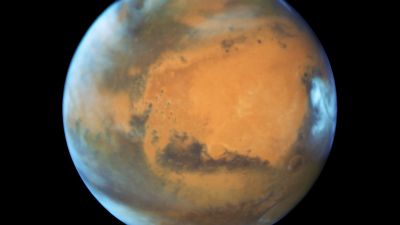Race to the red planet gets underway as UAE Mars launch lifts off

Perhaps it is not surprising that, what with pandemics, climate emergencies and political upheaval, 2020 is proving to be a bumper year for space exploration.
There are three missions to Mars in July alone, including one from space newbie the United Arab Emirates which has launched the first ever interplanetary probe by an Arab nation.
The spacecraft began its journey to Mars with a blast off in Japan - marking a seven-month journey to the red planet.
Lift-off was due to happen in mid-July, but was postponed due to bad weather.
While once the space race was a head-to-head between the US and Russia, more recently Europe, China and India have also stepped up their programmes to explore life beyond the Earth’s orbit.
And, now with this latest challenge, the UAE is looking to join the elite club of those countries that have studied the Martian atmosphere, a signal, perhaps, that the space race is shifting to the oil-rich Middle East.
The UAE's first spacecraft is due to circle Mars and hopes to build a Mars-scale weather map by characterizing the red planet's lower atmosphere.
The mission is named "Al Amal" - Arabic for "Hope" - and for good reason. Mars has proved to be the graveyard for numerous missions and several spacecrafts have blown up, crash-landed or simply never made it.
The red planet is notoriously hard to reach, and in over 50 years of launch attempts, about half of the missions have failed to get off the ground on Earth or overshot Mars.
The Emirati's unmanned mission probe is expected to arrive at the red planet in around seven months, coinciding with the country's 50th anniversary.
UAE scientists hope the probe will provide a deeper understanding of the Martian atmosphere.
Controlled from Dubai, the celestial weather station will strive for an exceptionally high Martian orbit of 13,670 miles by 27,340 miles (22,000 kilometres by 44,000 kilometres) to study the upper atmosphere and monitor climate change.
The probe is equipped with three scientific instruments to study the Martian atmosphere - an imager, an infrared spectrometer and an ultraviolet spectrometer and will send back images to Earth while circling the planet for at least two years.
Scientists want to know what Mars was like billions of years ago when it had rivers, lakes and oceans that may have allowed simple, tiny organisms to flourish before the planet became the barren desert world it is today.
"Weather is not a still image that happens at one particular time," explains Sarah Amiri, the mission's science lead.
"Weather is a continuously developing and evolving system and understanding the weather of Mars provides us an understanding of the atmospheric makeup of that planet and the atmospheric changes that that planet goes through.
"Being able to put together the data of the Emirates Mars mission, together with data that has been collected about Mars throughout the years, that humanity has been studying Mars, will allow us to get the full picture of the evolution of the Martian atmosphere."
If the Emirati mission succeeds, this relatively young space agency - which was only established in 2014 - will be joining a select group, with only the US, the former Soviet Union, the European Space Agency and India having achieved Mars missions before.
China hopes to achieve the task next year after its last attempt, a collaboration with Russia in 2011, ended in failure.
Only the US has successfully put a spacecraft on Mars; the first of the Americans eight successful missions began with the twin Vikings in 1976.
Two NASA landers, InSight and Curiosity, are now operating there, while six other spacecraft are exploring the planet from orbit: three from the US, two European and one from India.